Introduction
Welcome to the dark side of the internet— the intriguing and mysterious realm known as the Dark Web. This hidden layer of the internet has become infamous for its illicit activities, but it’s important to distinguish fact from fiction. In this article, we will explore what the Dark Web really is, how it operates, and most importantly, how to navigate it safely and find what you’re looking for.
The Dark Web is a part of the internet that is not indexed by search engines like Google and is inaccessible to the average internet user. It is a network of anonymous websites that require special software to access. These websites are often involved in illegal activities, such as the sale of drugs, weapons, stolen data, and hacking tools. However, it’s also important to note that the Dark Web is also used by individuals seeking anonymity for legitimate reasons, such as journalists, whistleblowers, and activists.
To access the Dark Web, you need to understand the concept of hidden services. Unlike regular websites that have a known IP address, hidden services are websites with no fixed IP address and are only accessible through the Tor network. This network ensures the anonymity of both the website owners and the visitors by routing internet traffic through a series of encrypted nodes, making it difficult to trace the source of the connection.
Anonymity is a crucial aspect of the Dark Web, as it allows users to browse and interact without revealing their identities. It is achieved through the use of virtual private networks (VPNs) that create a secure connection between the user’s device and the internet. A trustworthy VPN not only masks your IP address but also encrypts your internet traffic, protecting your privacy and making it harder for anyone to track your online activities.
The most popular software used to access the Dark Web is the Tor browser. Tor stands for “The Onion Router” and is designed to provide secure and anonymous internet browsing. It encrypts your internet connection and routes it through multiple relays, making it nearly impossible to trace your online activities back to your physical location. The Tor browser also has built-in features for blocking harmful scripts and ensuring your online safety.
In the next sections, we will delve deeper into the Dark Web, exploring popular marketplaces, guiding you on how to search and navigate this hidden world, and most importantly, keeping you safe from scams and legal issues. So, fasten your seatbelt and get ready for an eye-opening journey into the depths of the Dark Web.
What is the Dark Web?
The Dark Web, often portrayed as a seedy underbelly of the internet, is a part of the World Wide Web that is intentionally hidden and inaccessible to conventional search engines. It is a subset of the Deep Web, which refers to all the web pages that are not indexed by search engines. While the Deep Web includes legitimate websites like online banking portals and private databases, the Dark Web is specifically associated with illicit activities and anonymous communication.
The Dark Web operates on a decentralized network called Tor (The Onion Router), which was originally developed by the U.S. Navy to protect government communications. Tor uses a layered encryption system to ensure the anonymity of its users by bouncing their internet traffic through a series of relays. This encryption not only obscures the identity and location of the user but also ensures that the websites visited cannot be traced back to the user’s IP address.
The anonymity provided by the Dark Web has made it attractive to individuals engaged in illegal activities. It has become a hub for the sale and exchange of illicit goods and services, including drugs, counterfeit documents, hacking tools, and stolen data. Criminal organizations and cybercriminals often leverage the Dark Web for money laundering, identity theft, and other nefarious activities that thrive on anonymity.
However, it’s important to note that not everything on the Dark Web is illegal or malicious. It also serves as a platform for free speech, whistleblowing, and political activism. Many journalists, activists, and individuals living under oppressive regimes use the Dark Web to communicate anonymously, share sensitive information, and protect their identities from surveillance.
It is crucial to understand that accessing the Dark Web comes with inherent risks. While anonymity can be advantageous, it also attracts scammers, hackers, and law enforcement agencies. Users need to exercise caution, especially regarding personal information, financial transactions, and interactions with unknown individuals or websites. A sound knowledge of security measures, such as using trustworthy VPNs, keeping software up to date, and practicing safe online habits, is essential.
In the following sections, we will explore how to access the Dark Web, navigate its marketplaces, and stay safe from potential dangers. By understanding its complexities and taking necessary precautions, you can confidently explore the hidden world of the Dark Web while minimizing risk and protecting your online security.
Understanding the Hidden Services
The Dark Web is made up of hidden services, also known as onion services, which are websites that can only be accessed through the Tor network. These websites are designed to provide anonymity to both the website operators and visitors, ensuring a secure and private browsing experience.
Unlike traditional websites with fixed IP addresses, hidden services have no single point of failure or central server. Instead, they utilize a distributed network of servers, known as Tor nodes, to maintain their operations and protect against censorship or shutdowns. This decentralized nature allows hidden services to remain online and accessible even if some Tor nodes are compromised or taken down.
Hidden services are identified by a unique string of characters, called an onion address, that ends with “.onion”. These addresses are randomly generated and almost impossible to guess or search for without prior knowledge. This adds another layer of anonymity to the Dark Web, as it becomes extremely difficult for anyone to trace the origin or location of a hidden service.
When a visitor wants to access a hidden service, they use the Tor browser to establish a connection through a series of encrypted relays. Each relay in this circuit only knows the previous and next relay in the chain, creating a path that prevents anyone from tracking the user’s activity. The final relay in the circuit connects to the server hosting the hidden service, allowing the user to access the website while maintaining their anonymity.
The anonymity provided by hidden services is not limited to visitors; it also extends to the operators of these websites. With traditional websites, the IP address of the server hosting the site can be easily identified, making it possible for authorities or hackers to target the operators. In contrast, hidden services are designed to keep the server’s location hidden, reducing the risk of discovery and allowing website operators to remain anonymous and evade surveillance.
It’s worth noting that not all hidden services on the Dark Web are involved in illegal activities. While there is a significant amount of illicit content, such as marketplaces for drugs and stolen goods, there are also legitimate websites and forums discussing various topics, including technology, privacy, and political activism. It is essential to exercise caution and discernment when navigating the Dark Web to avoid engaging with malicious or illegal content.
In the next sections, we will delve deeper into the steps required to access the Dark Web, find popular marketplaces, and protect yourself from potential risks. By understanding the intricacies of hidden services and the underlying technology, you will be better equipped to explore the Dark Web while prioritizing your safety and privacy.
The Importance of Anonymity
Anonymity plays a vital role in the Dark Web, providing users with a shield of protection and enabling them to browse, communicate, and transact without revealing their true identities. In this section, we will explore the significance of anonymity in the Dark Web and why it is crucial in maintaining privacy and security.
The Dark Web has gained notoriety due to its association with illegal activities, such as the sale of drugs, weapons, and stolen data. Engaging in such activities without anonymity can have dire consequences, as authorities may be actively monitoring and collecting evidence to catch individuals involved in illicit dealings. Anonymity acts as a crucial layer of protection, making it difficult for law enforcement agencies to link online actions to specific individuals. It allows users to shield their true identities and minimize the risk of potential legal repercussions.
Anonymity also offers significant benefits for individuals who use the Dark Web for legitimate purposes. Journalists, whistleblowers, and activists often rely on anonymous platforms to share sensitive information without fear of retaliation. Anonymity safeguards their identities, ensuring that their messages reach the intended audience and allowing them to shine a light on corruption, injustice, and other issues that require public attention.
Furthermore, anonymity on the Dark Web protects users’ privacy on a personal level. In today’s digital age, where data breaches and surveillance scandals are all too common, maintaining privacy is becoming increasingly challenging. The Dark Web provides an alternative space where individuals can freely navigate without sharing their personal information with third parties or being subjected to invasive data collection practices. Anonymity ensures that users have control over the information they reveal and helps prevent targeted advertising, data profiling, and invasive surveillance.
It is important to note that while anonymity offers protection, it does not grant absolute immunity from all risks. Users must still exercise caution and adhere to best practices to mitigate potential threats. Cybercriminals and scammers also take advantage of the anonymity provided by the Dark Web, making it crucial for users to remain vigilant and aware of potential scams or malicious actors.
In summary, anonymity is a cornerstone of the Dark Web and plays a significant role in protecting users’ identities, preserving privacy, and facilitating free expression. Whether you are exploring the Dark Web for legitimate purposes or curious about its hidden depths, understanding the importance of anonymity and maintaining secure browsing practices are essential for your safety and peace of mind.
Accessing the Dark Web
Accessing the Dark Web is significantly different from browsing the regular internet. It requires specific tools and precautions to ensure privacy and security. In this section, we will explore the steps you need to take to access the Dark Web safely.
The first step is to use a trustworthy virtual private network (VPN). A VPN creates an encrypted connection between your device and the internet, masking your IP address and location. This step is essential because it adds an extra layer of security and anonymity, making it difficult for anyone to track your online activities. Choose a VPN that prioritizes privacy, has a no-logs policy, and offers a wide range of server locations.
Once you have a reliable VPN, the next step is to download and install the Tor browser. The Tor browser is specially designed to access the Dark Web and provides an extra layer of privacy and security by routing your internet traffic through a network of encrypted relays. It is available for Windows, macOS, Linux, and Android, offering a user-friendly interface and seamless integration with the Tor network.
After installing the Tor browser, the next step is to configure your security settings. Open the Tor browser and navigate to the options or settings menu. Ensure that you have enabled the highest level of security and privacy settings for maximum protection. These settings may include disabling JavaScript, blocking third-party cookies, and disabling plug-ins that could potentially compromise your anonymity.
With your VPN connected and Tor browser properly configured, you are now ready to access the Dark Web. Launch the Tor browser and wait for it to establish a secure connection to the Tor network. Once connected, you will see the Tor browser interface, which is similar to a regular web browser. From here, you can start browsing the Dark Web by entering .onion website addresses or using search engines specifically designed for the Dark Web.
It’s important to note that the Dark Web can be a dangerous place, so exercise caution and follow best practices to protect yourself. Avoid clicking on suspicious links or downloading unknown files. Be wary of scams, phishing attempts, and fake marketplaces. Stick to reputable sources and communities to reduce the risk of encountering malicious actors or falling victim to scams.
Additionally, remember to disconnect from the Tor network and close the Tor browser when you have finished browsing the Dark Web. This will minimize any potential risks and ensure that your browsing history and connection details are not stored on your device.
By following these steps and taking appropriate precautions, you can access the Dark Web securely and explore its hidden depths while protecting your privacy and maintaining online anonymity.
Popular Dark Web Marketplaces
Among the various facets of the Dark Web, darknet marketplaces have gained significant attention. These marketplaces serve as platforms for buying and selling a wide range of illicit goods and services. In this section, we will explore some of the popular darknet marketplaces that operate within the Dark Web.
One well-known marketplace on the Dark Web is “The Silk Road,” which gained notoriety as the first major online marketplace for drugs. It operated from 2011 to 2013 and provided a platform for users to purchase various narcotics using Bitcoin. Despite being shut down by authorities, its legacy paved the way for the emergence of other darknet marketplaces.
Another prominent marketplace is “AlphaBay,” launched in 2014. It quickly gained a reputation as one of the largest and most diverse darknet marketplaces, facilitating the sale of drugs, stolen data, counterfeit items, and more. However, in 2017, AlphaBay was taken down by law enforcement agencies, leaving a void that was quickly filled by other marketplaces.
“Dream Market” emerged as a widely used darknet marketplace after the downfall of AlphaBay. It provided a platform for the sale of drugs, hacking tools, counterfeit documents, and other illegal items. However, Dream Market announced its closure in 2019, citing security reasons. This closure led to the rise of alternative marketplaces striving to capture the user base left behind.
One such marketplace that gained popularity is “Empire Market.” It offers a wide range of products, including drugs, digital goods, counterfeit items, and more. Empire Market is known for its user-friendly interface, reliable vendors, and escrow system that ensures secure transactions. However, due to the nature of the Dark Web, marketplaces may come and go, facing periodic shutdowns and rebranding efforts, requiring users to stay updated on the current landscape.
It is essential to approach these marketplaces with caution and discernment. While illegal activities dominate the Dark Web marketplaces, it is worth noting that not all listings are illegal or fraudulent. Some vendors may offer digital privacy tools, confidential services, or other legitimate items. However, always be diligent in assessing the credibility, reputation, and reviews of vendors before engaging in any transactions.
It’s important to remember that engaging in illegal activities can have serious consequences, including legal prosecution. The Dark Web is not a safe haven, and law enforcement agencies continue to devote significant resources to combat criminal activities within its boundaries.
In summary, darknet marketplaces are an integral part of the Dark Web ecosystem, providing a platform for buying and selling illicit goods and services. While some marketplaces have come and gone, others have risen to take their place. As a user, it is crucial to exercise caution, evaluate vendors carefully, and adhere to legal and ethical boundaries when navigating these marketplaces.
Finding a Trustworthy VPN
When accessing the Dark Web, maintaining privacy and security is paramount. A trustworthy virtual private network (VPN) is a crucial tool in safeguarding your online activities and ensuring anonymity. In this section, we will discuss how to find a reliable and reputable VPN provider.
The first step in selecting a VPN is to research and evaluate different providers. Look for VPNs that prioritize privacy and have a strong reputation for their security measures. Reading independent reviews and comparing features will help you make an informed decision.
One important aspect to consider is the VPN’s logging policy. Ensure that the provider does not keep logs of your online activities, as this can potentially compromise your privacy. Look for VPNs that have a strict no-logs policy, meaning they do not collect or store any information regarding your internet usage or IP address.
The number and location of servers offered by a VPN provider is also important. Having a wide range of server locations allows for better connectivity and the ability to access geo-restricted content if desired. Additionally, a larger number of servers can distribute the load more effectively, ensuring better speeds and stability while using the VPN.
The level of encryption provided by the VPN is another vital consideration. Look for VPNs that offer strong encryption protocols, such as OpenVPN or IKEv2. This ensures that your internet traffic is well-protected and secure from unauthorized access. Additionally, features like a kill switch can automatically disconnect your internet connection if the VPN connection drops, preventing your real IP address from being exposed.
User-friendliness and ease of use are also crucial factors to consider. A VPN should have intuitive and user-friendly applications for different devices and operating systems. Check if the VPN offers support for the platforms you intend to use it on, such as Windows, macOS, Android, or iOS.
Lastly, pricing is an important factor to consider. While free VPNs may seem attractive, they often come with limitations such as data caps, slower speeds, or questionable privacy practices. Investing in a paid VPN service generally offers better performance, more robust security, and reliable customer support.
In summary, when choosing a VPN for accessing the Dark Web, take the time to research and evaluate different providers. Look for VPNs that prioritize privacy, have a strict no-logs policy, offer a wide range of servers, use strong encryption protocols, and provide user-friendly applications for various platforms. Remember that a VPN is just one aspect of maintaining anonymity and security, so make sure to combine it with other best practices, such as regularly updating your software and practicing safe browsing habits.
Tor Browser and its Features
The Tor browser is a powerful tool for accessing the Dark Web while ensuring privacy and anonymity. Developed by the Tor Project, it is specifically designed to protect users’ identities and safeguard their online activities. In this section, we will explore the Tor browser and its key features.
The Tor browser gets its name from “The Onion Router”. It functions by routing your internet traffic through a network of encrypted relays, making it extremely difficult for anyone to trace your online activities back to your physical location. This multi-layered encryption ensures that your connection is secure and your identity remains hidden.
One of the main features of the Tor browser is its focus on privacy. Unlike regular web browsers, the Tor browser blocks tracking cookies, preventing websites from collecting data about your browsing habits. It also disables many potentially harmful scripts by default, reducing the risk of malware or malicious activities.
The Tor browser also has built-in safeguards to protect against browser fingerprinting. Browser fingerprinting refers to the collection of unique data points about your browser and device, such as screen resolution, browser plugins, and installed fonts. By blocking or altering these data points, the Tor browser helps to maintain anonymity and reduce the risk of being tracked across websites.
Additionally, the Tor browser offers a feature called “New Identity” or “New Circuit”. This feature allows you to change your virtual location by generating a new set of relays for your internet traffic. This can be helpful in situations where you want to refresh your connection or access region-specific content on the clearnet.
While the Tor browser provides a secure and anonymous browsing experience, it’s important to be aware of its limitations. Due to the nature of the Tor network, browsing speeds can be slower compared to regular web browsing. This is because your internet traffic is being routed through multiple relays, adding an extra step in the connection process. However, recent advancements have improved the Tor network’s speed, making it more accessible for users.
Another crucial consideration is that the Tor browser does not offer complete protection against all types of threats. While it helps to maintain anonymity and encrypt your connection, it cannot guarantee protection against malware, phishing attacks, or other malicious activities. It’s important to exercise caution, employ additional security measures, and practice safe browsing habits when using the Tor browser.
In summary, the Tor browser is a powerful tool for accessing the Dark Web while prioritizing privacy and anonymity. Its multi-layered encryption, privacy-focused features, and ability to change your virtual location make it a popular choice among those seeking a secure browsing experience. However, users must remain vigilant and employ other security measures to mitigate potential risks and ensure a safe online experience.
Searching the Dark Web
Searching the Dark Web can be a daunting task due to its hidden nature and lack of indexing by traditional search engines. However, there are specific search engines and directories designed to help users navigate this clandestine part of the internet. In this section, we will discuss how to effectively search the Dark Web and find the information you’re looking for.
One of the most well-known search engines for the Dark Web is “DuckDuckGo”. This search engine provides private and anonymous search results, and it also offers an Onion service that allows users to search the Dark Web. By accessing the DuckDuckGo Onion service through the Tor network, you can search for websites and content within the Dark Web while maintaining your anonymity.
OnionLink is another search engine specifically designed to search the Dark Web. It indexes .onion websites and provides users with a straightforward search interface. OnionLink allows you to explore different categories, making it easier to find specific types of content within the Dark Web.
Tor2web is a web proxy service that allows users to access .onion websites directly from a regular web browser without the need for the Tor browser. While using Tor2web may simplify the browsing process, it is essential to be aware that using a regular browser does not provide the same level of privacy and anonymity as the Tor browser. Therefore, exercise caution and avoid transmitting any personal or sensitive information.
When searching the Dark Web, it’s important to use specific keywords and phrases to refine your search results. Due to the lack of indexing, searching in the Dark Web can be less precise than traditional web searches. Be prepared to browse through various results to find the information or websites you are looking for.
It is worth noting that while the Dark Web offers anonymity, it also harbors illegal activities and potentially harmful content. Exercise caution and refrain from clicking on suspicious links or engaging with unknown websites or individuals. Stick to reputable sources, community forums, and trusted marketplaces to reduce the risk of encountering scams or malicious content.
Additionally, it is important to keep in mind that the Dark Web is constantly evolving, and websites may come and go. What you find today may not be available tomorrow. Stay updated on the current Dark Web landscape and be prepared to adapt your search strategies accordingly.
In summary, searching the Dark Web requires using specialized search engines like DuckDuckGo and OnionLink. Use specific keywords and phrases to refine your search results, and exercise caution when clicking on links or engaging with unknown websites. Stay informed about the ever-changing nature of the Dark Web, and always prioritize your personal safety and privacy while accessing this hidden part of the internet.
How to Navigate Dark Web Marketplaces
Dark web marketplaces are unique online platforms where users can buy and sell illicit goods and services. Navigating these marketplaces requires caution, knowledge, and attention to detail. In this section, we will guide you on how to navigate dark web marketplaces effectively and safely.
The first step in navigating dark web marketplaces is to ensure you have the necessary tools for anonymous and secure browsing. Connect to a trustworthy virtual private network (VPN) and use the Tor browser to access the dark web. These tools will provide the privacy and security needed to prevent your identity from being exposed.
Once you are connected to the Tor network, you can start exploring dark web marketplaces. However, it’s essential to stick to reputable marketplaces with positive reviews and established credibility. Research and read user feedback to gauge a marketplace’s integrity and track record. Popular marketplaces often have user forums or review sections where you can gather information about sellers and their products.
Prioritize your safety by being cautious and discerning when engaging with sellers. Look for sellers with a good reputation and a proven track record of successful transactions. Review the seller’s feedback, ratings, and the number of completed sales to gauge their trustworthiness. Remember, trust is key when navigating dark web marketplaces.
It’s important to conduct thorough research before making any purchases. Take your time to compare prices, quality, and product descriptions across different sellers. Be skeptical of sellers offering prices that seem too good to be true, as they may be scams looking to exploit unsuspecting buyers.
Communication with the seller is also vital. Establish clear communication channels and inquire about the product or service you are interested in. Verified sellers often provide detailed information about their offerings, shipping methods, and refund policies. Establishing trust through effective communication can help ensure a smooth transaction.
However, it is crucial to remember that engaging in illegal activities on dark web marketplaces can have severe consequences. Avoid purchasing or engaging in any activities that are illegal or unethical, as it can result in legal prosecution or financial loss. Be aware of the laws in your jurisdiction and abide by them when navigating dark web marketplaces.
Lastly, always prioritize your online security during your interactions on dark web marketplaces. Use secure payment methods, such as cryptocurrencies like Bitcoin, which offer an additional layer of privacy. Avoid providing personal information that is unnecessary for the transaction, and consider using a reputable escrow service to protect your funds until the transaction is complete.
By following these guidelines and employing caution, you can navigate dark web marketplaces more effectively and minimize the risks associated with illicit activities. Remember to prioritize your safety, be discerning when choosing sellers, and stay informed about the ever-evolving dark web landscape.
Staying Safe and Avoiding Scams
Navigating the dark web carries inherent risks, as malicious actors and scams lurk within its hidden corners. Therefore, it is crucial to prioritize your safety and take precautions to avoid falling victim to scams or encountering harmful content. In this section, we will discuss key strategies for staying safe and avoiding scams on the dark web.
The first and most important rule is to exercise caution and skepticism. Be wary of offers that seem too good to be true, as they often are. Scammers frequently lure unsuspecting individuals with enticing deals or promises of rare goods or services. Trust your instincts and always verify the legitimacy of a seller or marketplace before proceeding with any transactions.
Research and gather information about sellers and marketplaces. Read reviews, check forums, and consult reputable sources to ensure the credibility and reliability of the parties involved. Focus on marketplaces or sellers with a proven track record and positive feedback from previous customers. Avoid new or unverified vendors who haven’t yet established a reputation.
When communicating with sellers, pay attention to red flags. Be cautious of sellers who pressure you to complete transactions quickly or request payment outside of trusted platforms. Legitimate sellers will provide clear and transparent information about their products, shipping methods, and return policies. If anything seems suspicious or inconsistent, it’s best to steer clear and find a more trustworthy alternative.
Use secure and anonymous payment methods. Cryptocurrencies like Bitcoin offer an added layer of privacy and security for transactions on the dark web. Avoid using traditional payment methods like credit cards or bank transfers, as they can be easily traced back to your identity. Additionally, consider using a reputable escrow service for high-value transactions to ensure that payment is released only when you have received the agreed-upon goods or services.
Protect your personal information and maintain your online anonymity. Never provide unnecessary personal details or sensitive information on the dark web. Use unique usernames and strong, complex passwords for your accounts. Enable two-factor authentication whenever possible to add an extra layer of security.
Keep your devices and software up to date with the latest security patches. Regularly update your operating system, antivirus software, and other applications to protect against known vulnerabilities. Utilize reliable and up-to-date security tools, such as firewalls and anti-malware software, to detect and prevent potential threats.
Finally, trust your judgment and be prepared to exit or seek help if you feel uncomfortable or come across illegal content or activities. Remember that engaging in illegal or unethical actions carries significant consequences, and it’s essential to prioritize your safety and legal compliance.
In summary, staying safe on the dark web requires a combination of caution, skepticism, and informed decision-making. Conduct thorough research, verify and trust reputable sources, use secure payment methods, protect your personal information, and keep your devices secure and updated. By following these guidelines, you can reduce the risk of falling victim to scams, protect your anonymity, and navigate the dark web more safely.
Identifying Trustworthy Vendors
When navigating the dark web, one of the key challenges is identifying trustworthy vendors amidst the sea of anonymized sellers. Due to the nature of the dark web, where illegal activities are prevalent, it’s crucial to exercise caution and carefully assess vendors to ensure a safe and secure transaction. In this section, we will discuss strategies to help you identify trustworthy vendors on the dark web.
One of the first steps in identifying a trustworthy vendor is conducting thorough research. Utilize dark web forums, community boards, and review sites to gather information and feedback about vendors. Look for vendors with a positive reputation and a history of successful transactions, as this indicates their reliability and commitment to delivering quality goods or services.
Pay close attention to the feedback and reviews left by previous customers. Look for consistent positive feedback and high ratings. Take note of any negative reviews but also consider the context and the overall volume of reviews. A single negative review might not be a cause for concern if the majority of the feedback is positive.
It’s also important to consider a vendor’s longevity and activity on the marketplace. Vendors who have been operating for a significant period and have a proven track record are generally more reliable. Look for vendors with established profiles and a history of consistent sales, as this indicates their commitment to providing a good customer experience.
Communication is a fundamental aspect of identifying trustworthy vendors. Pay attention to the promptness and politeness of their responses. Legitimate vendors will be responsive and willing to answer any questions or concerns you may have. Clear and open communication builds trust and indicates a professional approach to conducting business.
Another aspect to consider is the vendor’s product listings. Look for detailed descriptions, clear specifications, and high-quality product images. Legitimate vendors take the time to provide accurate information about their products, giving potential buyers a clear understanding of what they are purchasing. Be cautious of vendors with vague or inconsistent product descriptions, as this could be a red flag for potential scams.
Trustworthy vendors often use escrow services for secure transactions. Escrow services act as a trusted third party that holds the funds until the buyer confirms the satisfactory receipt of the goods or services. This assures both parties that the transaction will be fair and protects against fraud. If a vendor refuses to use escrow services or insists on alternative payment methods, exercise caution and consider finding a more reliable alternative.
Lastly, trust your instincts. If something feels off or doesn’t seem right, it’s best to err on the side of caution. Remember that your safety and security are paramount, and it’s better to trust vendors who have established credibility and a proven track record.
In summary, identifying trustworthy vendors on the dark web requires diligent research, careful assessment of feedback and reviews, effective communication, attention to detail in product listings, and an understanding of secure payment methods. By following these strategies, you can significantly reduce the risk of falling victim to scams and transactions gone wrong, and ensure a safer and more reliable experience on the dark web.
Purchasing and Payments on the Dark Web
The dark web presents a unique marketplace where anonymity and security are paramount. As an anonymous environment, purchasing and making payments on the dark web require special considerations. In this section, we will discuss important factors to keep in mind when engaging in transactions on the dark web.
When purchasing items on the dark web, it is crucial to thoroughly research both the product and the seller. Read reviews and feedback from previous buyers to gauge the reliability and quality of the seller’s products. Look for vendors with a proven track record of successful transactions and positive customer experiences.
An important aspect of purchasing on the dark web is the use of cryptocurrencies, such as Bitcoin. Cryptocurrencies offer a higher level of anonymity compared to traditional payment methods. Using Bitcoin or other cryptocurrencies allows you to protect your identity and financial information. It’s important to familiarize yourself with the process of acquiring and using cryptocurrencies securely to ensure a smooth transaction.
Another crucial consideration is the use of an escrow service. Escrow services act as intermediaries, holding the payment until the buyer confirms the satisfactory receipt of the goods or services. This process helps protect both the buyer and the seller from potential scams or fraudulent activities. It’s recommended to use reputable escrow services approved by the dark web marketplace to ensure the fairness and security of transactions.
Security should be a top priority when making payments on the dark web. Ensure that you are using a secure and private network connection, such as a virtual private network (VPN), to protect your browsing activities and payment information. Only make payments through encrypted and trusted channels to prevent the interception or potential theft of your financial details.
Be cautious of vendors who request direct payments outside of the dark web marketplace. Transactions within the marketplace provide an additional layer of security and dispute resolution in case of any issues. Direct payments outside of the marketplace are riskier and may indicate potential scams.
It is essential to review and understand the refund policy of the dark web marketplace before making any purchases. Different marketplaces have varying policies regarding refunds and returns. Familiarize yourself with these policies to avoid any disappointment or disputes after completing a transaction.
Lastly, maintaining discretion is vital when engaging in transactions on the dark web. Avoid discussing your purchases or revealing sensitive information, such as delivery addresses, on public forums or in unsecure communication channels. Minimize the risk of your personal information being exposed and exercise caution at all times.
In summary, purchasing and making payments on the dark web necessitates careful research, the use of cryptocurrencies, reliance on escrow services, and a focus on security. Always conduct due diligence on vendors, utilize secure payment methods, and prioritize your privacy and anonymity. By following these best practices, you can have a safer and more secure purchase experience on the dark web.
Avoiding Legal Issues and Law Enforcement
Engaging in activities on the dark web comes with legal risks, as it is often associated with illicit activities and operates outside the bounds of conventional law enforcement. Understanding the potential legal issues and taking necessary precautions is crucial to avoid legal trouble. In this section, we will discuss strategies to help you navigate the dark web while minimizing the risk of legal issues and encounters with law enforcement.
First and foremost, it’s crucial to understand and comply with the laws in your jurisdiction. Laws regarding the use of the dark web, illegal activities, illicit substances, and cybersecurity vary from country to country. Educate yourself about the legal boundaries and potential consequences of engaging in illegal activities. Ignorance of the law is not a valid defense and will not protect you from legal repercussions.
Be cautious of the websites you visit and the types of activities you engage in on the dark web. Many activities, including the sale of drugs, stolen data, counterfeit items, and hacking tools, are illegal in most jurisdictions. Avoid participating in or supporting any illegal activities to reduce the risk of being targeted by law enforcement agencies.
It is imperative to maintain your anonymity and privacy on the dark web. Utilize encryption tools, such as a virtual private network (VPN) and the Tor browser, to protect your identity and conceal your online activities. These tools help minimize the risk of being tracked or monitored by law enforcement agencies. However, it’s important to note that these tools are not foolproof, and law enforcement agencies have methods to identify and apprehend individuals involved in illegal activities.
Practice discretion and avoid discussing or sharing sensitive information on public forums or communication channels. Be mindful of the trails you leave behind, such as details about your identity, location, or involvement in illegal activities. Minimizing your digital footprint can help reduce the risk of being targeted by law enforcement agencies or other malicious actors.
Keep your digital devices secure and up to date with the latest security patches. Regularly update your operating system, antivirus software, and applications to protect against vulnerabilities that could be exploited by law enforcement or hackers. Use strong passwords, enable two-factor authentication, and employ other security measures to enhance the protection of your personal information.
It’s important to note that law enforcement agencies have dedicated teams and resources focused on detecting and combating illegal activities on the dark web. They employ various techniques, including undercover operations, tracking methods, and data analysis, to identify and apprehend individuals involved in criminal activities. It is crucial to exercise caution and make informed decisions to minimize the risk of encountering law enforcement.
Lastly, it is always advisable to consult with a legal professional regarding the laws and regulations specific to your jurisdiction. They can provide guidance and ensure that your activities on the dark web remain within legal boundaries.
In summary, navigating the dark web requires a keen understanding of legal implications and law enforcement risks. Complying with the laws in your jurisdiction, maintaining anonymity, practicing discretion, securing your devices, and seeking legal advice when necessary can help minimize the risk of legal issues and encounters with law enforcement agencies. Remember that engaging in illegal activities carries potential legal consequences regardless of the anonymity the dark web offers.
Conclusion
Navigating the dark web can be both intriguing and risky. It is a realm shrouded in anonymity, where illicit activities and potential dangers lurk. However, with knowledge, cautiousness, and the right tools, you can explore the dark web while minimizing risks and protecting your privacy.
Understanding what the dark web is and how it operates is crucial. It is a hidden part of the internet that requires specific software, such as the Tor browser, and precautions to access. The dark web hosts various marketplaces, hidden services, and communities, catering to both illicit and legitimate activities.
To navigate the dark web safely, prioritize anonymity and security. Utilize trustworthy virtual private networks (VPNs) to protect your identity and encrypt your internet connection. The Tor browser, with its built-in safeguards and focus on privacy, is the primary tool for accessing the dark web securely.
Whether searching for information or exploring marketplaces, exercise caution and perform thorough research. Verify the credibility of vendors and marketplaces, and read feedback and reviews from previous users. Prioritize secure and anonymous payment methods, such as cryptocurrencies, and consider using reputable escrow services for added protection.
It is essential to stay safe and protect yourself from scams. Be skeptical, trust reliable sources, and engage with trusted communities. Avoid sharing unnecessary personal information and practice discretion in your interactions. Continuously update your devices and software, and be aware of the ever-changing landscape and potential legal issues associated with the dark web.
Remember that the dark web is not without risks, and engaging in illegal activities can lead to severe consequences. Laws vary in different jurisdictions, and it is vital to understand and comply with the laws in your own country or region.
As you delve into the dark web, always prioritize your safety, privacy, and ethical boundaries. Make informed decisions, remain cautious, and seek legal advice if necessary. By following these guidelines, you can navigate the dark web more securely and with a heightened level of awareness.







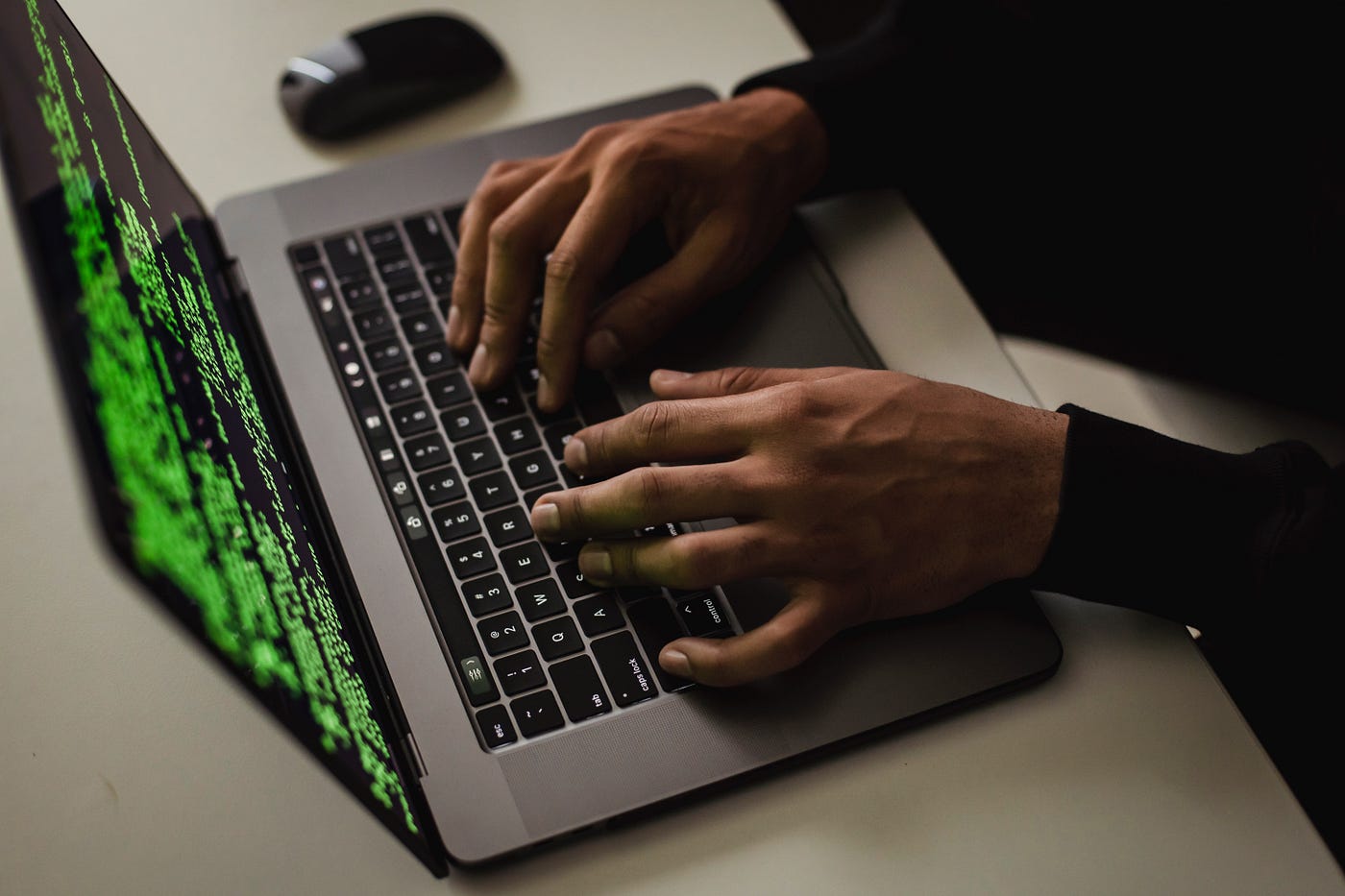

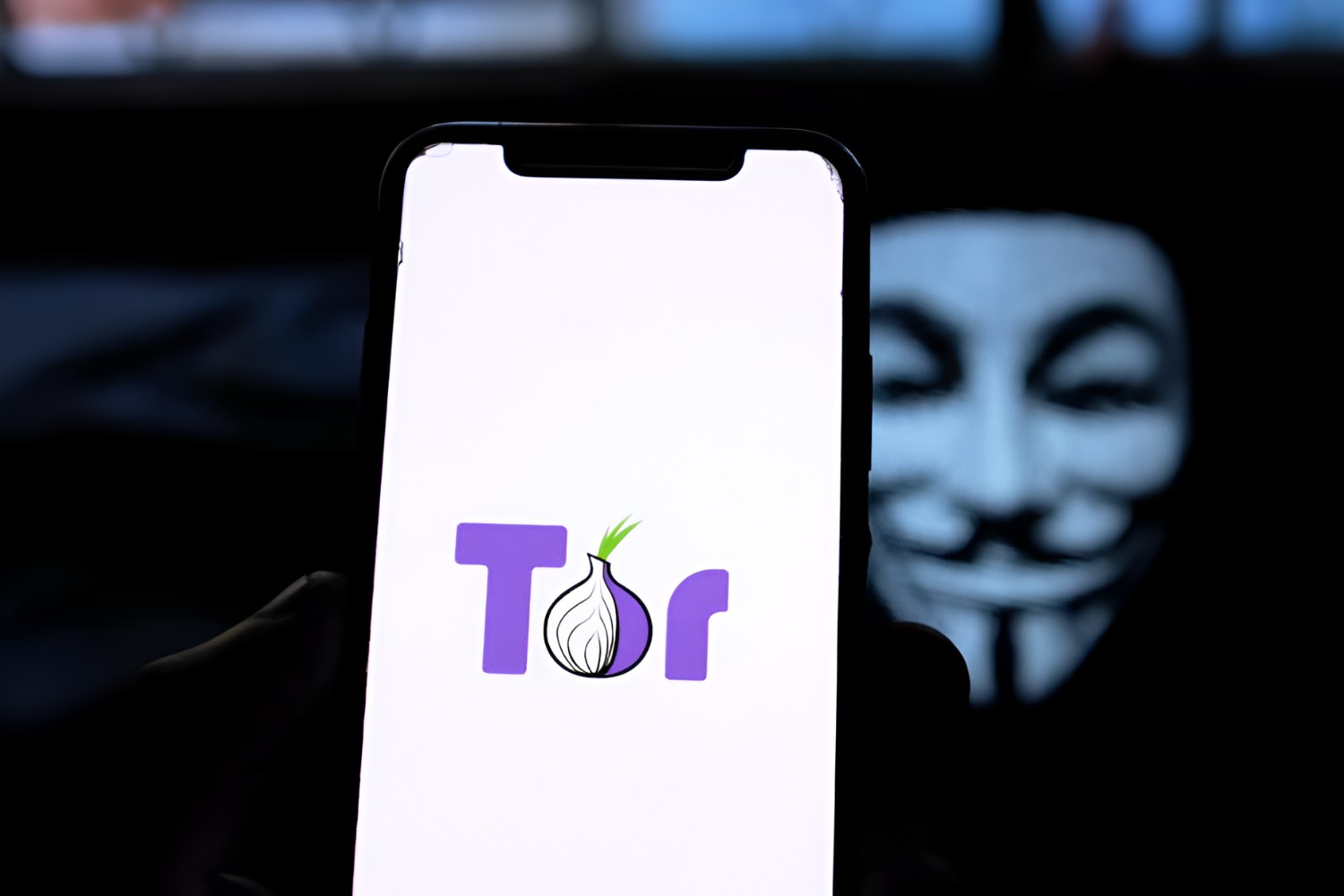

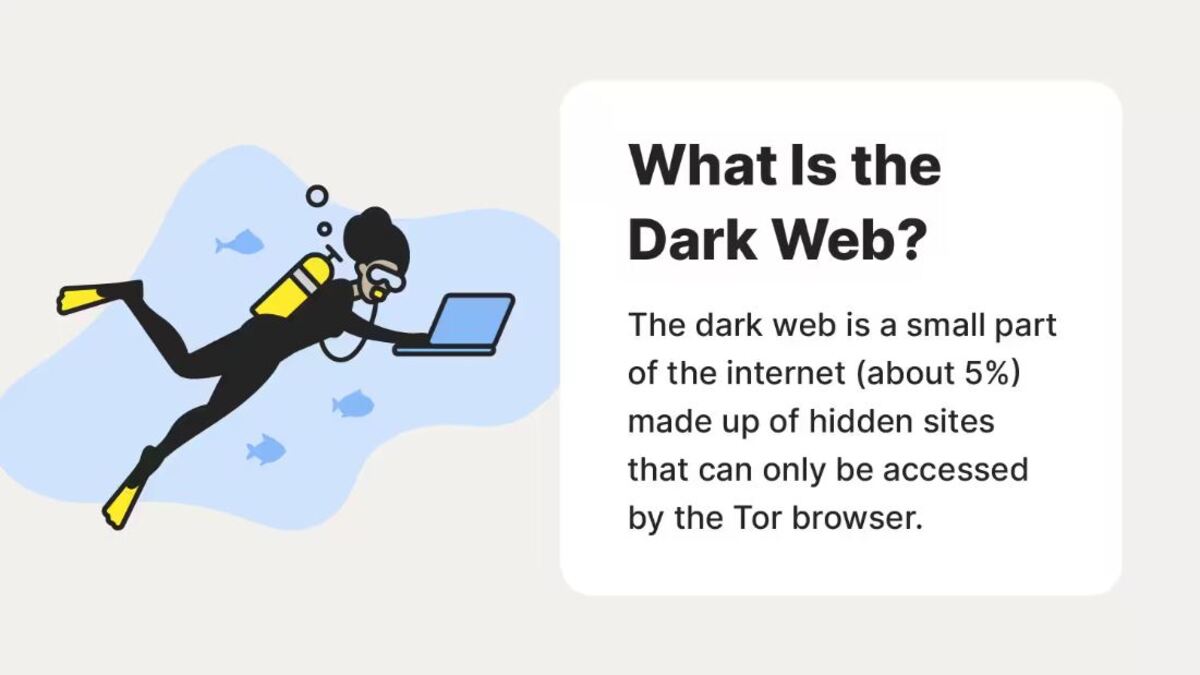
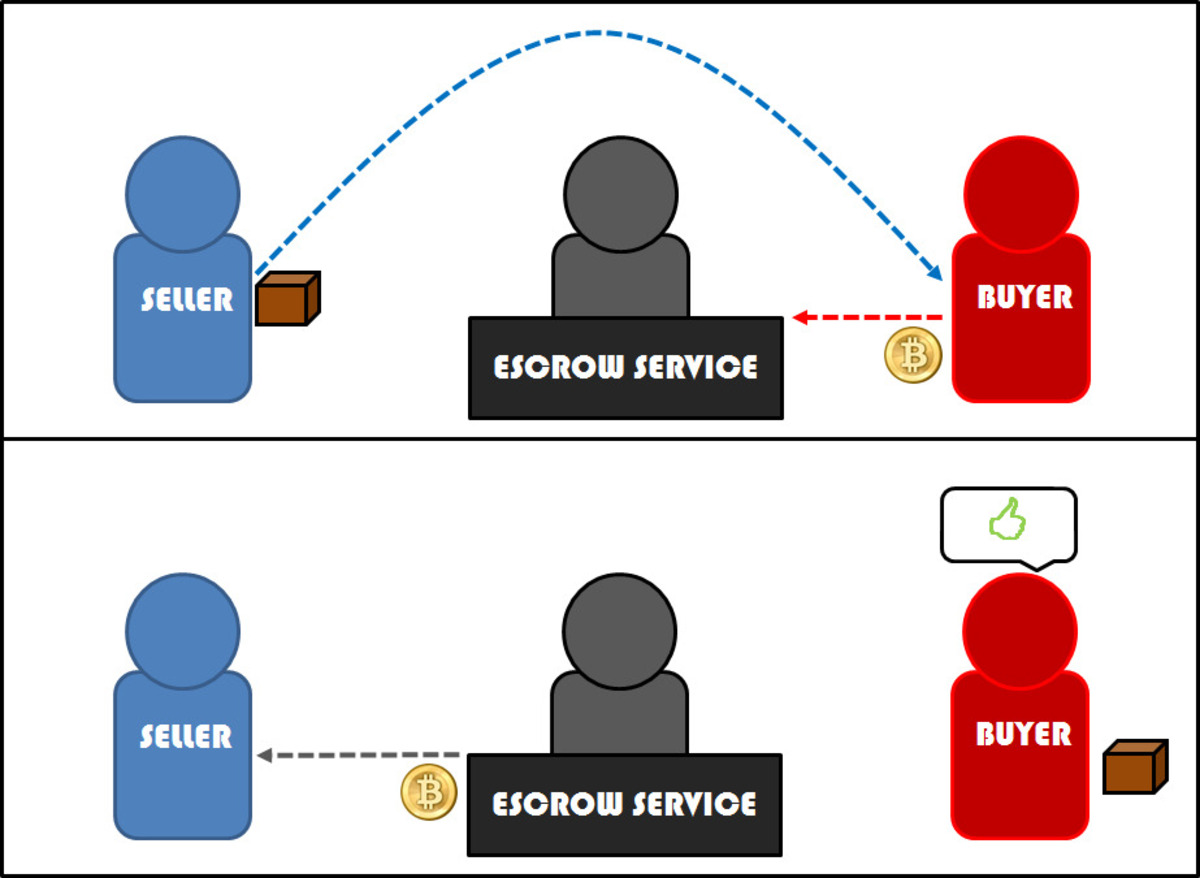

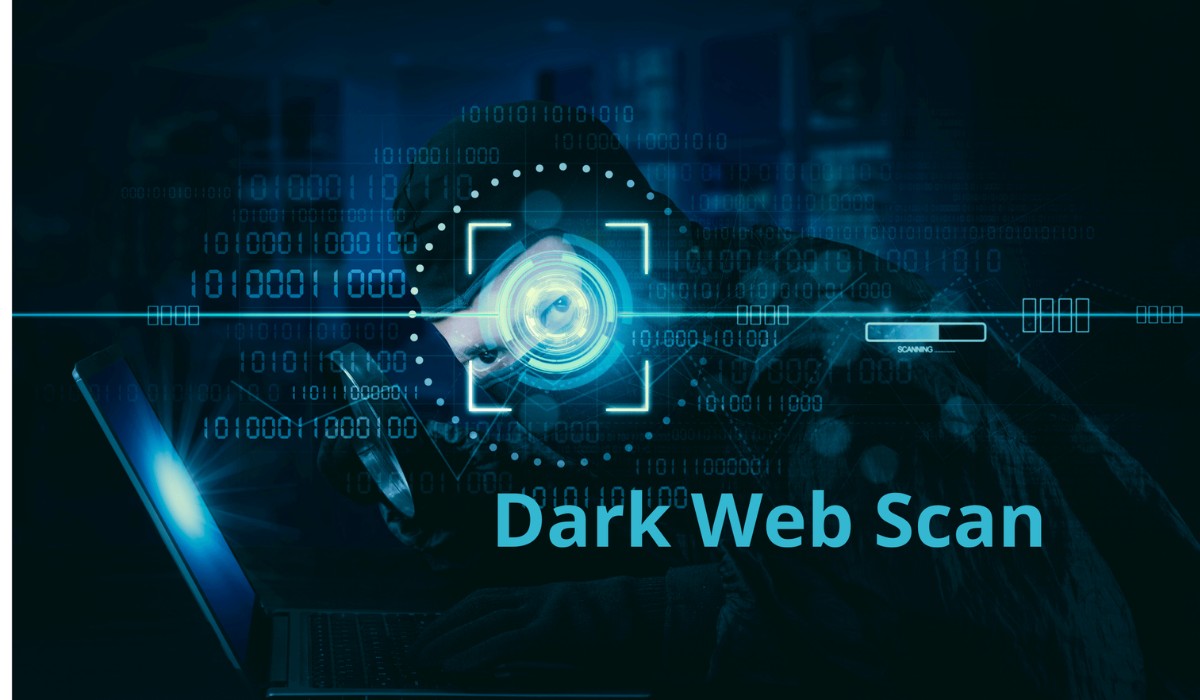

![17 BEST & Safe Putlocker Alternative Sites [Aug – Updated]](https://robots.net/wp-content/uploads/2020/04/people-3281583_1920-300x200.jpg)








